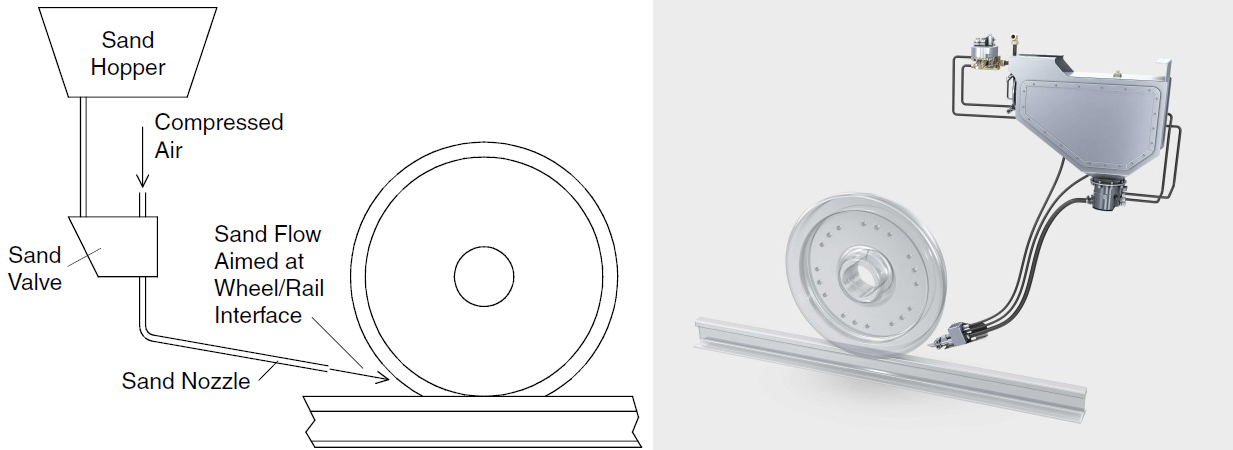Sanding Systems
While conditions leading to poor adhesion have been well investigated, methods for addressing the problems have not. The main adhesion enhancer used on railway networks world wide is sand. Sanding is used in train operations to improve adhesion in both braking and traction. In braking it is used to ensure that the train stops in as short a distance as possible. It usually occurs automatically when the train driver selects emergency braking. Sanding in traction, however, is a manual process. The train driver must determine when to apply the sand and how long the application should last.
The sand is supplied from a hopper mounted under the train. Compressed air is used to blow the sand out of a nozzle attached to the bogie and directed at the wheel–rail contact region (see following figure). In most systems the sand is blown at a constant flow rate, but some can provide a variable flow rate.

While sanding is effective and easy to use, it can potentially cause complex and costly problems relating to both rolling stock and track infrastructure. Sand application has been shown to increase wear rates of both wheel and rail materials by up to an order of magnitude. Maintenance of sanders and control of sand build-up around track adhesion trouble spots are also issues that require particular attention.
Very high positive friction modifiers to enhance the coefficient of friction to 0.4 – 0.6 are available, but are really only in the development stage. There are a number of different products available, but most involve a solid stick of material that is applied directly to the wheel tread.
During autumn, when leaf fall occurs, leaf mulch is compressed in the wheel – rail contact andforms an extremely hard layer on the rail surface. This layer can cause adhesion loss problems, as already mentioned, but is also extremely hard to remove. A number of methods are used including using high pressure water-jets and blasting with Sandite (a mixture of sand and aluminum oxide particles), and a new system has now been developed that involves using a high power laser to burn away the layer. All of these, however, in the U.K., are applied by maintenance trains, of which there are very few, and gaining track access is extremely difficult. Water-jets and Sandite also have knock-on effects, which may be detrimental to the track infrastructure.
Sources: Handbook of Railway Vehicle Dynamics, Edited by Simon Iwnicki; Picture, Knorr Bremse
Videos;
